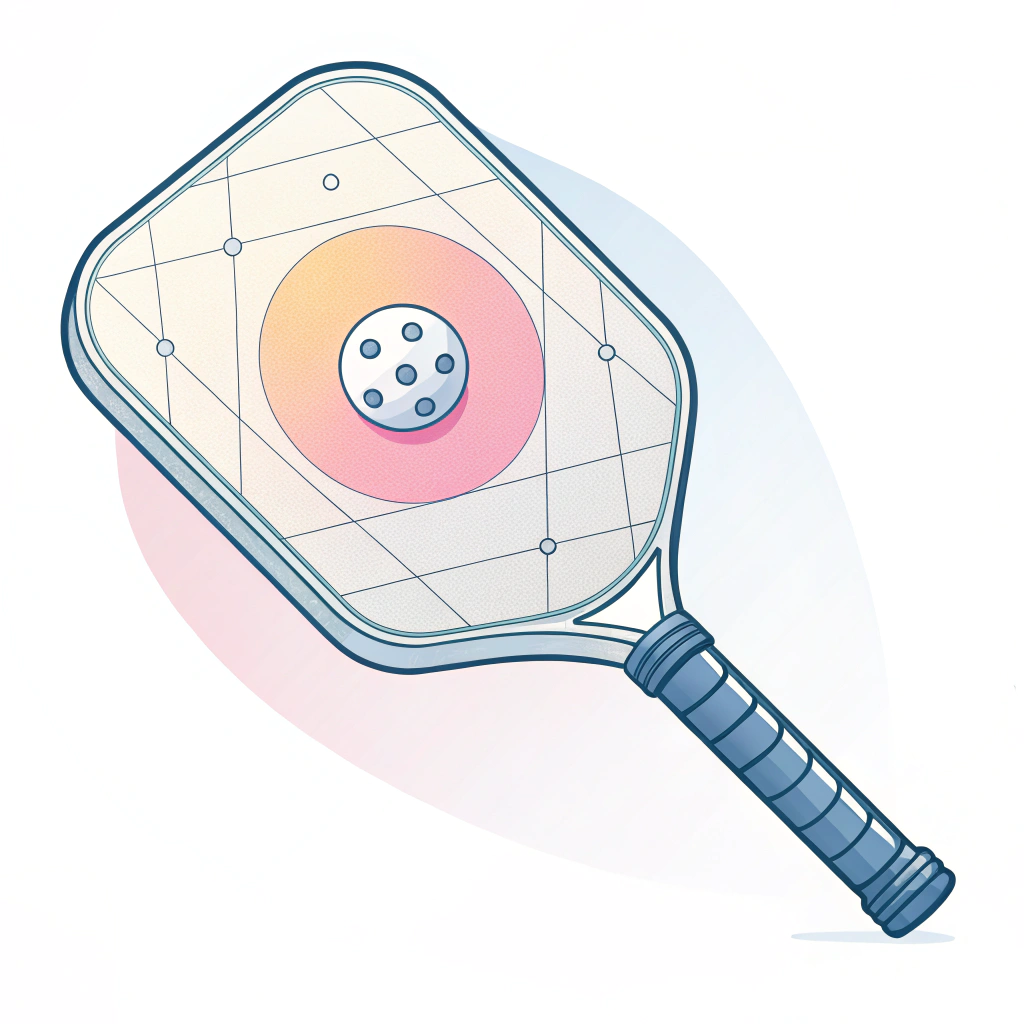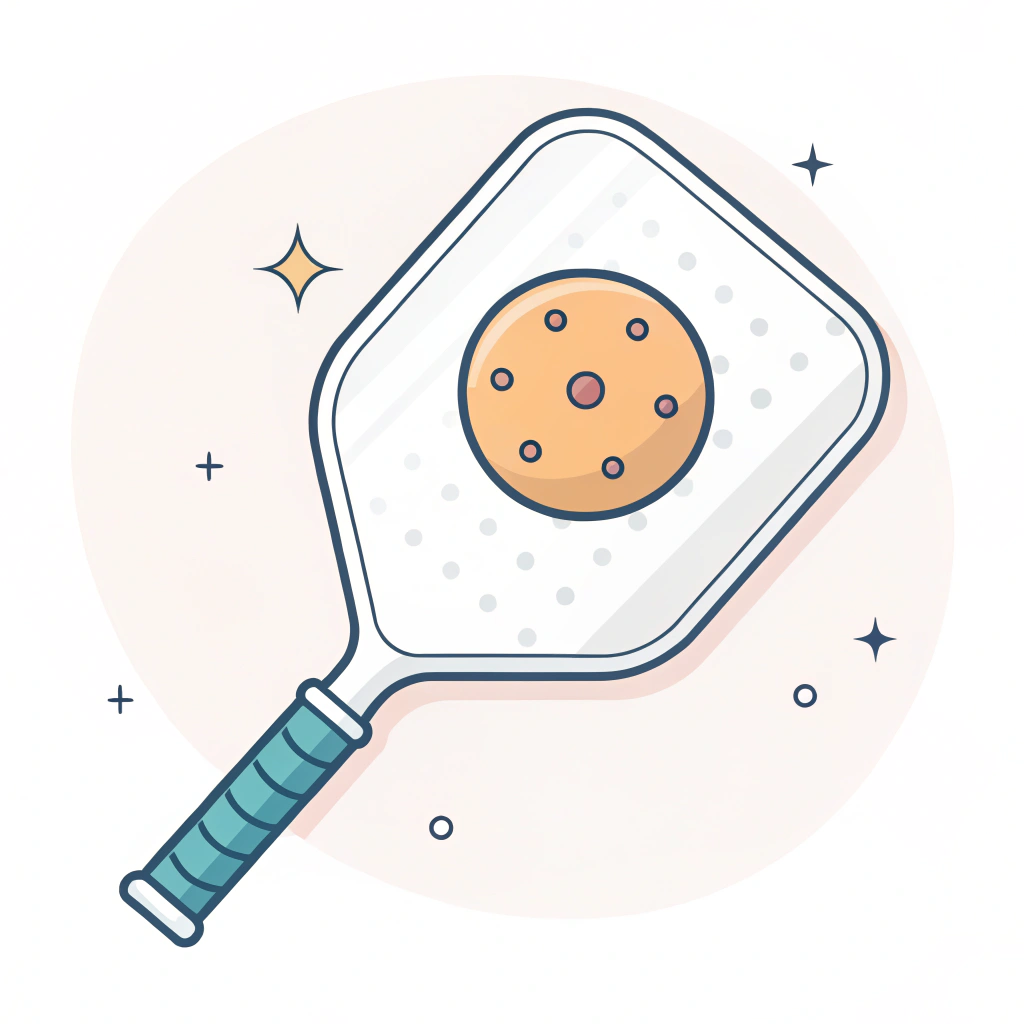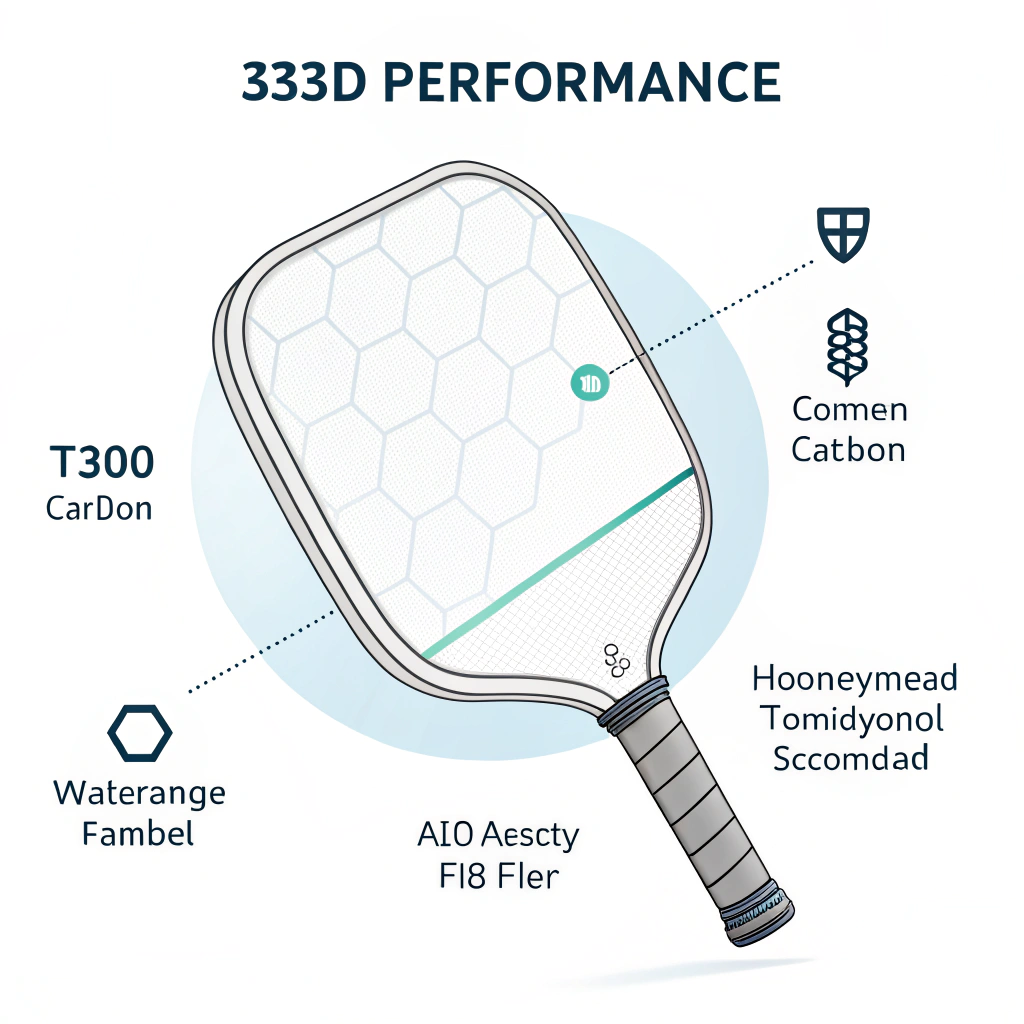The ideal pickleball paddle sweet spot can be achieved by strategically balancing paddle dimensions, advanced materials1, and precision manufacturing techniques. In practice, paddles measuring around 16–16½" in length and 7½–8" in width tend to offer a universal sweet spot, maximizing power, control, and maneuverability.
The sweet spot of a paddle is the area where the impact of the ball generates the most efficient energy transfer. It is where players experience optimal control and power despite off-center hits. For B2B professionals considering product improvements or partnership decisions, understanding and engineering the sweet spot is crucial to designing paddles that stand out in the competitive sports equipment market.
Key aspects include:
- Paddle dimensions: These play a central role in determining the area where maximum energy is transferred.
- Core materials: Affect vibration reduction and durability.
- Surface materials: Such as carbon fiber, fiberglass, and composites, which influence stiffness and responsiveness.
- Manufacturing processes: Methods like hot pressing, cold pressing, and thermoforming2 further fine-tune the paddle’s overall performance.
Paddle design involves a mix of materials engineering and manufacturing precision. The sweet spot is influenced by both the paddle’s geometry and the selection of materials. Below are some technical considerations:
-
Paddle Dimensions:
Research indicates that paddles measuring between 16–16½" in length and 7½–8" in width result in a balanced sweet spot. This dimension provides enough surface area for forgiveness on off-center hits while maintaining power and control. -
Material Selection:
Selecting the right material is crucial for performance optimization. For example:- Carbon Fiber3 Variants: Variants like 3K, 12K, and T300 offer a combination of strength, flexibility, and lightweight properties. The use of these materials aids in reducing paddle vibration and increasing the sweet spot’s responsiveness.
- Fiberglass: Known for its flexibility and broad sweet spot, fiberglass materials are ideal for players who prioritize control.
- Composite Materials4: Combinations of carbon fiber and fiberglass or bamboo core composites and honeycomb cores balance durability with shock absorption.
-
Core Construction:
The inner core of a paddle is vital for energy transfer and impact absorption. Options such as Nomex, aluminum, and polymer honeycomb cores each bring unique attributes to the paddle:- Nomex Honeycomb Core5: Offers superior shock absorption.
- Aluminum Honeycomb Core: Provides a balanced weight, enhancing both power and control.
- Polymer Honeycomb Core: Offers better elasticity and minimizes vibration for a comfortable feel.
-
Manufacturing Processes:
The production technique significantly impacts the paddle’s performance characteristics. Our manufacturing processes include:- Hot Pressing: Best for high production efficiency and structural integrity.
- Cold Pressing: Allows more precise control over material distribution, maintaining material properties.
- Thermoforming: Ideal for complex shapes ensuring excellent material distribution and performance.
To optimize the sweet spot, manufacturers must carefully control each step in the production process. Below, we compare the three main manufacturing techniques and their impact on paddle design:
| Process | Advantages | Disadvantages | Best Use Case |
|---|---|---|---|
| Hot Pressing | High efficiency, strong paddles, excellent impact resistance | Potential alteration of material properties, high equipment investment | Mass production with high durability |
| Cold Pressing | Precise control over thickness, maintains inherent material properties, enhanced ball feel | Longer production cycles, requires high precision equipment | Designs requiring precision and detailed feel |
| Thermoforming | Intricate design possibilities, uniform material distribution, enhanced stability | Extended production time, higher cost for equipment | Premium or custom-made paddle designs |
This table is instrumental when evaluating production methods to improve the paddle’s sweet spot by ensuring that the chosen process aligns with desired performance characteristics. For B2B buyers, these considerations help ensure that the final product not only meets player expectations but also remains competitive in the market.
Selecting the right materials is a balancing act between strength, flexibility, and durability. Our approach at NEX Pickleball centers on integrating advanced materials to optimize the sweet spot and overall paddle performance. Here’s a closer look:
-
Carbon Fiber Variants:
The use of 3K Carbon Fiber offers flexibility that minimizes vibrations, while 12K Carbon Fiber provides a tougher surface, ideal for players needing extra power. T300 Carbon Fiber strikes a balance between lightweight design and high tensile strength—crucial for competitive play. -
Fiberglass:
Known for its elasticity and larger sweet spot, fiberglass ensures that the paddle can absorb shocks effectively while maintaining soft contact with the ball. This results in a responsive feel, particularly beneficial for players seeking control and precision. -
Composite Materials:
By combining carbon fiber with fiberglass, we create a harmonious balance of rigidity and flexibility. Furthermore, composite cores such as bamboo core composites and honeycomb cores provide necessary shock absorption and stability, reducing vibrations and enhancing the paddle’s longevity.
These innovations are part of our commitment to meeting diverse player needs while pushing the boundaries of paddle performance.
B2B partners often explore how theoretical improvements translate into practical benefits. Let’s consider an example from our production line:
A leading sports retailer sought paddles that not only catered to high-level competitive play but also offered a forgiving sweet spot for recreational players. We designed a paddle with dimensions in the ideal range, using a combination of T300 Carbon Fiber with a Nomex Honeycomb Core. The result was a paddle that delivered:
- Enhanced power and control
- Reduced vibration due to the optimal balance between high-performance material and core damping properties
- A larger sweet spot, allowing even off-center hits to perform well
This case study illustrates the direct correlation between manufacturing processes and the final product performance. Through careful selection of materials and techniques, NEX Pickleball has crafted paddles that increase player confidence and overall satisfaction.
Based on current industry insights and our extensive manufacturing experience, we offer the following recommendations for B2B professionals seeking to optimize pickleball paddle design:
-
Define Precise Dimensions:
Standardize paddle lengths between 16–16½" and widths between 7½–8". These dimensions have been proven to create a universally effective sweet spot. -
Invest in Material Research:
Prioritize high-performance materials such as various types of Carbon Fiber and Fiberglass. Consider composite solutions when both power and control are needed. -
Select the Right Manufacturing Process:
Evaluate production techniques based on the product’s intended market. For high-volume orders, hot pressing ensures consistency and speed, while cold pressing and thermoforming offer detailed control over paddle characteristics. -
Implement Rigorous Testing:
Each paddle should undergo thorough testing for impact absorption, durability, and sweet spot accuracy. Utilize real-world testing scenarios to validate improvements. -
Customize According to End-User Needs:
Offer clients options to adjust dimensions, weight distribution, and grip sizes. This personalization not only enhances performance but also builds brand loyalty in a competitive market. -
Leverage Data for Continuous Improvement:
Use performance data from both factory test results and user feedback to iterate on paddle designs. Continuous improvement helps maintain a competitive edge in quality and innovation.
By adopting these recommendations, businesses can enhance product quality while addressing diverse player needs. Each design decision, from material selection to process optimization, contributes to a paddles’ overall performance and market appeal.
Optimizing the sweet spot in pickleball paddles is a multifaceted challenge requiring a blend of advanced materials, precise manufacturing techniques, and rigorous testing. For B2B professionals in the sports equipment industry, this presents an opportunity not only to improve paddle performance but also to differentiate products in a crowded market.
At NEX Pickleball, our expertise in advanced production techniques—such as hot pressing, cold pressing, and thermoforming—combined with our continuous pursuit in material innovation, empowers us to deliver paddles that meet the high demands of performance, durability, and comfort. Whether you are a product manager, design engineer, or procurement specialist, understanding these factors is key to making informed decisions and establishing successful business partnerships.
By carefully balancing paddle dimensions, materials, and manufacturing processes, companies can create pickleball paddles with a maximized sweet spot that delivers both powerful performance and consistent player satisfaction. Our experience in blending engineering precision with practical manufacturing solutions makes NEX Pickleball a valuable partner for businesses looking to lead in the high-performance sports equipment market.
People Also Ask
Q: What is the best sweet spot for a pickleball paddle?
A: The ideal sweet spot is generally found on paddles measuring between 16–16½" in length and 7½–8" in width. This size provides an optimal balance between forgiveness on off-center hits and maintaining power, control, and maneuverability for diverse playing styles.
Q: How do I know which pickleball paddle is right for me?
A: Choosing the right pickleball paddle involves considering factors such as weight, grip size, materials used (e.g., carbon fiber, fiberglass), shape, and core technology. It is crucial to select a paddle that aligns with your playing style, skill level, and performance preferences.
Q: Does sweet spot training work for pickleball?
A: Yes, incorporating sweet spot training can improve your game. Paddles designed with an enhanced sweet spot offer instant feedback, better shot control, precision, and power, thereby boosting overall confidence and performance on the court.
-
advanced materials: Read this article to understand the latest advancements in material science which improve product durability and performance in sports equipment. ↩
-
thermoforming: Learn about thermoforming techniques and how they allow for complex shapes and optimal material distribution in manufacturing. ↩
-
Carbon Fiber: Explore the benefits of carbon fiber, its variants, and why it is a critical component in high-performance paddle design. ↩
-
Composite Materials: Understand how composite materials combine different substances to balance strength, flexibility, and durability in sporting goods. ↩
-
Nomex Honeycomb Core: Discover the properties of Nomex Honeycomb Core and its role in enhancing shock absorption and structural integrity. ↩







